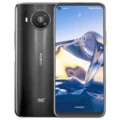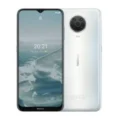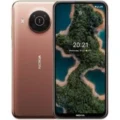Nokia 105 (2019)
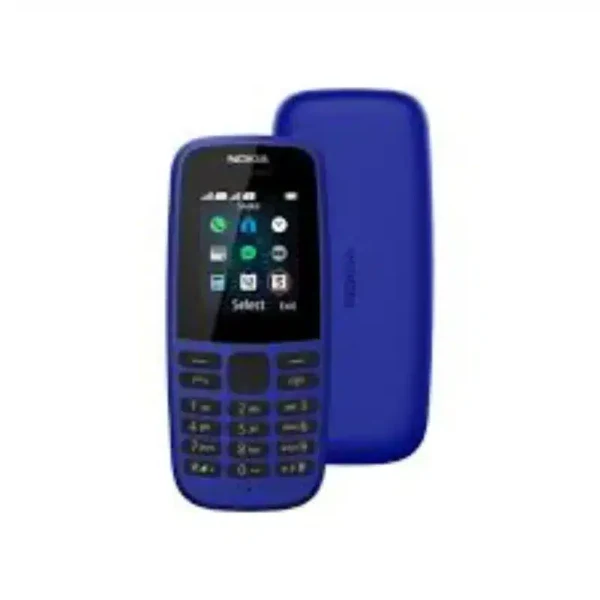


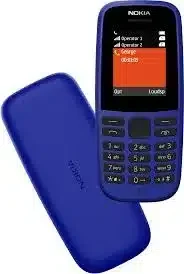
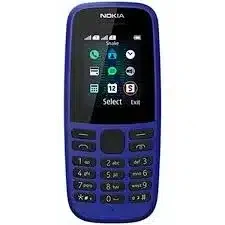

- : 1.77" 120x160 pixels
- : 1.77" 120x160 pixels
- : 800mAh
- : NO
Introducing the Nokia 105 (2019) – a straightforward and durable mobile phone designed for simplicity and reliability. This budget-friendly device combines essential features with Nokia’s renowned durability to provide users with a hassle-free communication experience.
The Nokia 105 (2019) features a compact and ergonomic design, ensuring a comfortable grip and easy portability. The 1.77-inch color display offers clear visibility, making navigation through menus and text messages a breeze. The island-style keypad enhances the user experience, simplifying typing and dialing.
Powered by a long-lasting battery, the Nokia 105 (2019) eliminates the need for frequent charging, allowing users to stay connected throughout their day. Whether you’re making calls or sending texts, this phone delivers reliable performance without complications.
Simplicity is key with the Nokia 105 (2019). The intuitive interface provides easy access to essential features, including a built-in FM radio for on-the-go entertainment. The addition of a flashlight adds practical utility to your daily activities.
Built to withstand daily wear and tear, the Nokia 105 boasts Nokia’s signature durability. Its sturdy construction ensures resilience against accidental drops and bumps, making it a reliable choice for users in need of a robust mobile device.
Connectivity-wise, the Nokia 105 supports standard 2G networks, offering broad coverage for reliable communication. With its affordable price point, this phone is an excellent option for those seeking a dependable backup device or a straightforward mobile phone without unnecessary complexities.
Experience the reliability and simplicity of the Nokia 105 – a no-nonsense mobile phone that streamlines communication without compromising on durability. Choose affordability without sacrificing quality in this user-friendly device designed to make your life easier.
Specs
Network
| 2G Network GSM 850 / 900 / 1800 / 1900 - SIM 1 & SIM 2 (dual-SIM) CDMA 800 / 1900 |
GSM 900 / 1800 - SIM 1 & SIM 2 (dual-SIM model only) |
LAUNCH
| Announced | July, 2025 |
| Status |
Available. Released 2019, September |
BODY
| Dimensions | 119 x 49.2 x 14.4 mm (4.69 x 1.94 x 0.57 in) |
| Weight | 73 g (2.57 oz) |
| SIMs SIM (Subscriber Identity Module) is a small card that contains mobile network subscriber's account information. This allows the phone using the card to attach to a mobile network. The SIM card is most commonly associated with GSM and UMTS mobile networks. Moving a SIM card from one phone to another allows a subscriber to switch mobile phones without having to contact their mobile network carrier. SIM cards can also be used by a phone to store limited amounts of data, such as phone numbers and text messages. |
Dual SIM (Mini-SIM, dual stand-by) Flashlight |
Display
| Display Type Display Technology => A number of display technologies and types used in mobile phones => TFT (Thin Film Transistor), IPS (In-Place Switching), OLED (Organic Light Emitting Diode), AMOLED (Active-Matrix Organic Light-Emitting Diode), Super AMOLED (an even advanced version of AMOLED), Resistive Touchscreen (Resistive touchscreens contain two layer of conductive material with a very small gap between them which acts as a resistance), Capacitive Touchsceen (Capacitive touchscreen technology consists of a layer of glass coated with a transparent conductor) | TFT LCD, 65K colors |
| Size | 1.77 inches, 9.7 cm2 (~16.6% screen-to-body ratio) |
| Resolution | 120 x 160 pixels, 4:3 ratio (~113 ppi density) |
PLATFORM
MEMORY
| Card Slot Memory Card Slot is a special slot for inserting a memory card. Memory cards allow you to expand the phone's built-in memory, A memory card (sometimes called a flash memory card or a storage card) is a small storage medium used to store data such as text, pictures, audio, and video, for use on small, portable or remote computing devices such as mobile phones, mp3 players, digital cameras. | No |
| Internal | 4MB 4MB RAM |
MAIN CAMERA
| Cameras Specs Today’s smartphones come equipped with a very comprehensive set of camera related specifications. Our smartphone, for many of us, has become our primary camera due to it being the one we always have with us. |
No |
SELFIE CAMERA
| Cameras Specs Today’s smartphones come equipped with a very comprehensive set of camera related specifications. Our smartphone, for many of us, has become our primary camera due to it being the one we always have with us. |
No |
SOUND
| Loudspeaker | Yes |
| 3.5mm jack |
Yes |
COMMS
| WLAN |
No |
| Positioning |
No |
| Bluetooth Bluetooth is a wireless communications technology for exchanging data between mobile phones, headsets, computers and other network devices over short distances without wires, Bluetooth technology was primarily designed to support simple wireless networking of personal consumer devices. | No |
| Infrared Infrared connectivity is an old wireless technology used to connect two electronic devices. It uses a beam of infrared light to transmit information and so requires direct line of sight and operates only at close range. | |
| USB | microUSB 1.1 (charging only) |
| NFC NFC (Near field communication) is a set of standards for smartphones and similar devices to establish peer-to-peer radio communications with each other by touching them together or bringing them into proximity, usually no more than a few inches. | |
| Radio |
Features
BATTERY
| Battery Type Battery Type => Cell phones run on various kinds of batteries depending on the manufacturer, phone size or shape and features. There are basically four types of cell phone batteries => Lithium Polymer, Lithium Ion, Nickel Metal Hydride and Nickel Cadmium. | Li-Ion (Lithium Ion) |
| Capacity Battery Capacity is a measure (typically in Amp-hr) of the charge stored by the battery, and is determined by the mass of active material contained in the battery. The battery capacity represents the maximum amount of energy that can be extracted from the battery under certain conditions. | 800 mAh |
| Placement | removable |
MISC
| Colors |
Black, Blue, Pink |
| Model | TA-1203, TA-1174, TA-1010, TA-1034 |
| SAR EU Each GSM handset has a radio transmitter and receiver in order to operate in the wireless GSM network. That transceiver is manufactured so that when used next to the ear and when worn on the belt, it won't exceed the limits for exposure to radio frequency energy set by the authorities.The authorities in question here are the Federal Communications Commission (FCC) of the U.S. Government, Industry Canada of the Canadian Government (IC), and the Council of the European Union. |
1.50 W/kg (head) 1.38 W/kg (body) |
| Price |
About 10 EUR |
TESTS
Reviews
Disclaimer Note
We strive to maintain accurate and up-to-date content on our website for general information purposes only. Please refrain from using the material for business, legal, or any other decisions.


